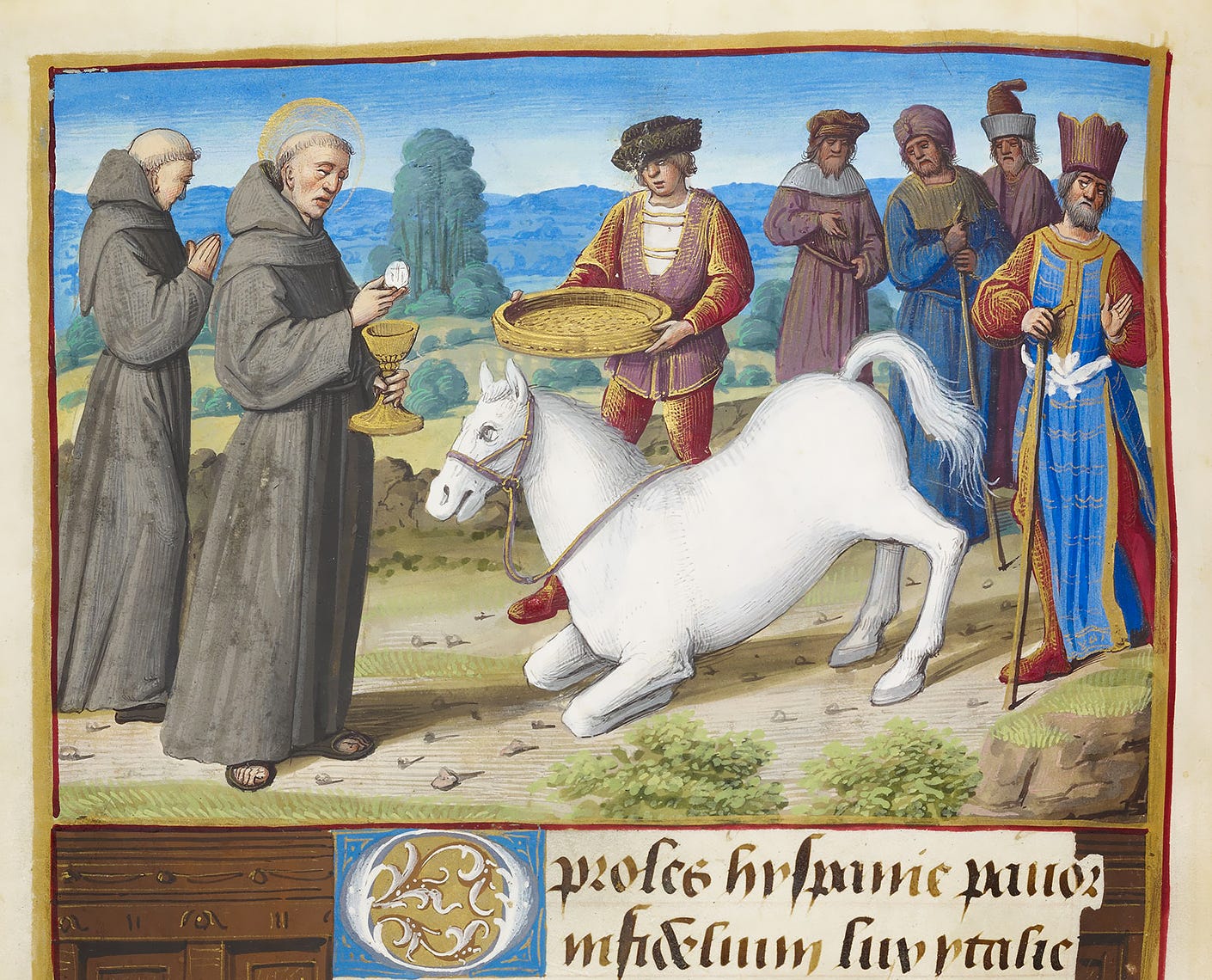I will give thee understanding, and I will instruct thee in this way, in which thou shalt go: I will fix my eyes upon thee.
Do not become like the horse and the mule, who have no understanding. With bit and bridle bind fast their jaws, who come not near unto thee.
Many are the scourges of the sinner, but mercy shall encompass him that hopeth in the Lord.
- Psalm 31:8-10 (Douay-Rheims)
Section 5 - A Note on the Mule
Before we continue the discussion of the donkey, I wanted to briefly touch on the mule. The mule is the hybrid that results when a female horse, a mare, mates with a male donkey. For those who want to know, a hinny is the offspring of a male horse and female donkey. Mules are often longer lived than horses and less stubborn than asses, making them better beasts of burden.
St. Isidore says that, “The mule (mulus) has a name derived from Greek – for it is this in Greek – or because, forced by the miller’s yoke, It draws the slow millstone (mola) around in grinding (molere). The Jews claim that Ana, Esau’s great-grandson, was the first to have herds of mares mounted by asses in the desert, so that new animals, mules, might be conceived contrary to nature. They also say that onagers were set to mount she-asses for this purpose, and this type of breeding was invented so that very speedy asses would be born from these unions.”
It was thought that many insects, such as bees, flies, and locusts, spontaneously generated from the dead bodies of certain animals. Interestingly, St. Isidore notes that locusts are born from the carcasses of mules.
“Indeed, many creatures naturally undergo mutation and, when they decay, are transformed into different species – for instance bees, out of the rotted flesh of calves, or beetles from horses, locusts from mules, scorpions from crabs.”
I don’t have a symbolic explanation for this event, though bees from calves or oxen will be covered in a later series.
Mules, and other hybrids, are typically sterile. Pliny provides a brief discussion of this (Book 8, Ch. 69):
“It has been observed that the animal which is thus produced by the union of the two species is of a third species, and does not resemble either of the parents; and that all animals produced in this way, of whatever kind they may be, are incapable of reproduction; she-mules are therefore barren.”
Mules are sterile because the have an odd number of chromosomes (63), inherited from a horse (64) and a donkey (62). Due to the mismatched chromosomes, their sex cells are unable to go through the process of meiosis, so they can’t make sperm or eggs.
This parallels our discussion of the legendary version of the ant-lion (half ant, half lion). The creature has two natures and is unable to propagate itself. The ant-lion is torn between being an herbivore and a carnivore, so it can’t make decisions about what to eat. The mule is torn between a horse and donkey, which are much similar. The dueling natures produce something close to a monster (a mixed creature that does not fit into categories).
The Grand Medieval Bestiary stated that, generally, hybrid births usually include information on the influence of vision on procreation, especially in people:
“It was thought that the appearance of offspring – both human and animal – could be affected by what the mother saw during her pregnancy. Accordingly, pregnant women were advised not to look upon the faces of the ugliest animals so as to avoid the risk of giving birth to children who resembled them. Similarly, pregnant domestic beasts were shown ideal representatives of their species in the hope that it would improve their offspring.”
I don’t know if mules of hinnies are particularly ugly, maybe they were considered so by medieval Christians. The avoidance of pregnant women looking at mules could have to do with the sterility of most hybrid animals.

Finally, there is also the famous story of Saint Anthony of Padua and the mule. A non-Christian Jewish man named Zachariah did not believe that the Eucharist was the body and blood of Christ. Anthony asked him if he would convert if Zachariah’s mule bowed down before the Host. Zachariah accepted the offer and starved his mule for two days. On the day of the trial, food was placed on one side of the mule and Anthony stood on the other with the Host.
As the story goes, the mule did not even glance at the food and went straight to Anthony, bowing low before the Eucharist. Zachariah kneeled near the animal and converted to Catholicism.
In the final post, I will discuss the ass in Scripture, and the various legends surrounding it. I will hopefully be able to tie the positive and negative interpretations of the donkey together in the person of Christ.
All manuscript images from https://bestiary.ca/index.html








> The mule is the male hybrid that results when a female horse, a mare, mates with a male donkey. For those who want to know, a hinny is the female offspring of a male horse and female donkey.
Minor, but mules aren't necessarily male and hinnies aren't necessarily female.